Last Updated on December 8, 2023 by Sharon Advik
Canon EOS R5 Review:
As a professional photographer, I frequently travel for business.
My job obligations require me to go to many locations and capture various events, which I value.
Photographing outside is far more enjoyable and exciting than doing it in certain studios that are indoors.
Last month, I took a break from work to spend time with my friends and pursue recreational photography.
My Canon EOS R5 was with me on the tour since it’s the perfect Camera for taking pictures outside.
Even though I use this camera for work, I enjoy using it to record various outside events and moments casually.
I also love photographing landscapes, mountains, and moving subjects, and I can attest that this Camera rarely misses a shot.
I’m in awe at how well it functions for outside shooting.
Overview:
One of Canon’s R series cameras is the Canon R5.
The Canon EOS R5 was first unveiled in July 2020.
It is a 45.0MP Pro Mirrorless camera featuring a Full frame (36 x 24 mm) sized CMOS sensor, built-in image stabilization, weather sealing, a fully articulated touch screen, and a Canon RF lens mount.
The Canon EOS R5 is ideal for professional image makers requiring quality, speed, and video capabilities.
This full-frame mirrorless camera sets a new benchmark for versatility with its newly built 45MP CMOS sensor, which supports 8K raw video recording and 12 fps continuous shooting with a mechanical shutter. It is the first EOS camera to include 5x optical zoom.
The Canon EOS R5 is, without a doubt, the company’s best still camera to date.
It is the ideal fusion of the shape of the EOS R, the functionality of the EOS 5D, and the high-quality autofocus of the EOS-1D X.
It’s one of the best cameras you’ll ever use if you’re a still or hybrid shooter alternating between still images and video.
| Specifications |
|---|
| 45MP - Full-frame CMOS Sensor |
| ISO 100 - 51200 |
| ISO can be expanded from 50 to 102400 |
| 5-axis Sensor-shift Image Stabilization |
| 5760k Electronic dot viewfinder |
| 8K at 30fps Video recording |
| 4K at 120fps Video Recording |
| 12.0fps (20.0fps Electronic) continuous shooting |
| 3.20" Fully Articulated Screen |
| 10-bit 4:2:2 Color |
| Built-in Wireless |
| Weather Sealed Body |
| 738g. 138 x 98 x 88 mm |
Body, Size, and Weight:
The external measurements of the Canon R5 are 138 x 98 x 88 mm (5.43 x 3.84 x 3.46′′) and weigh 738 g (1.63 lb/26.03 oz).
Canon R5 is a cumbersome camera for its class, given that the weight of mirrorless-type cameras is 456g.
It is 88mm in thickness, 35mm thicker than the class average, making it neither thin nor thinly built.
However, the body feels exceptionally well balanced, and the weight is distributed equally.
The added heft makes the body feel like a better match for some of the RF lenses, known for being more extensive.
The R5 and EOS R share the same top OLED screen and mode button on the rear control dial, making them look remarkably similar from the top. The changes are instantly noticeable at the rear.
The polarising M-Fn touch bar has been replaced with a recognizable joystick, with the AF-ON button moving to its more traditional spot.
The EOS R5 and Canon EOS RP(opens in new tab individual )’s D-pad buttons have been replaced with a control wheel, which makes using the R5 feel much more like operating a Canon EOS 5D Mark IV.
It is appropriate, given that the R5 is a 5-series camera meant to sit alongside its DSLR counterpart.
Sensor and Dxo Mark:
One of the primary elements affecting image quality in a digital camera is the size of the sensor.
The individual pixels in a big sensor are typically larger, providing higher low-light sensitivity, a more comprehensive dynamic range, and richer color depth than smaller pixels in a sensor of the same technological generation.
A big sensor camera will also give the photographer more creative alternatives when using a narrow depth of field.
It separates a subject from its background.
On the negative side, larger sensors tend to result in larger and heavier cameras and lenses since they are more expensive to build.
The format factor (also known as “crop factor”) of the Canon R5 is 1.0 and has a full-frame sensor.
The Canon R5 is positioned among the large-sensor cameras that aim for the best possible image quality across the spectrum of camera sensors.
The EOS R5 delivers both high-resolution stills and video output thanks to its newly built 45MP full-frame CMOS sensor, and the optimized DIGIC X image processor adds a lot of speed to this.
Working in various lighting conditions is made more accessible by the sensitivity range of ISO 100–51200, which can be increased to ISO 102400.
The rapid continuous shooting speeds of up to 12 fps with a mechanical shutter or silent 20 fps with an electronic shutter make it easier to work with moving subjects.
For most cameras, DXO Mark provides reliable data on the performance of the actual sensor.
The ratings for dynamic range (“DXO Landscape”), color depth (“DXO Portrait”), and low-light sensitivity (“DXO”) are given to each camera sensor as part of this service, which is based on laboratory testing (“DXO Sports”).
There is a standard called DxOMark.
To scientifically evaluate the image quality of camera sensors, DxO Mark assessed the Canon R5 sensor, receiving a 95 out of 100 rating for its overall image quality.






AutoFocus:
Dual Pixel CMOS AF II:
When Face + Tracking priority AF is chosen, the Dual Pixel CMOS AF II system of the EOS R5 camera offers an astounding 1,053 Automatic AF zones that can be specified as auto-focus focal areas.
Doing this lets you focus on the chosen AF point or ensure higher-precision Eye Detection AF.
You can record rapid action and keep attention easily, accurately, and quickly.
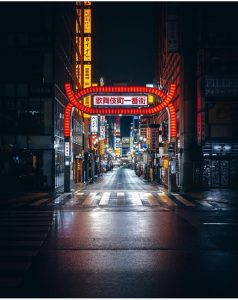
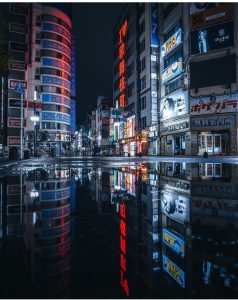


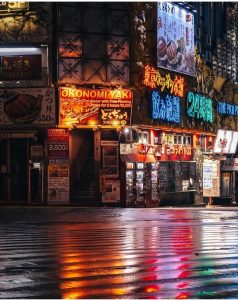
AF Area Coverage of Approx. 100% x 100%^2:
With some RF and EF lenses, the EOS R5 camera has a huge focus area of approximately 100% horizontally and 100% vertically.
The EOS R5 focuses on about 80% of the image’s horizontal and vertical planes when using Extender types I and II or older EF lenses.
It translates to quick and effective focusing even when positioning your subject outside the center of the frame.
This combined system of two photodiodes in each pixel eliminates focus hunting.
It enables quicker, more precise control of focus placement, creating a large and dense network of phase-detection gathering elements throughout most image sensors.
This focusing method is excellent for shooting and tracking moving subjects since it works to swiftly and precisely gain focus when working with still imagery.
It ensures that a crucial guide is reached with each shot.
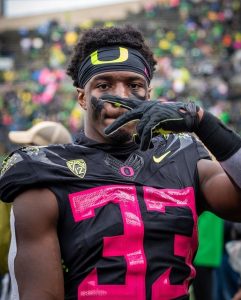


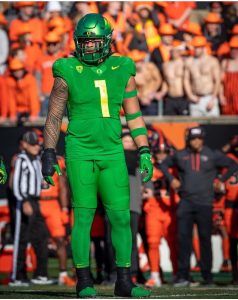
EV -6^3 Low-light Autofocus:
The EOS R5 camera’s incredible AF can function in light as weak as an EV -6.3, where other AF systems may fall or explore, making it ideal for night shooting or in shallow light situations.
Even with lenses with high F values, phenomenal AF is possible.
Rack Focus and Subject Tracking:
Rack focus is made possible by the Touch AF system and allows for straightforward focus switching by merely touching objects in the scene on the touchscreen.
Due to the Dual Pixel CMOS AF system’s capacity to distinguish subjects and keep its focus even when working in cluttered or shifting backgrounds, subject tracking in movies is also improved.
Deep Learning technology has also helped subject tracking by steadily improving the focusing system’s capacity to swiftly and reliably distinguish human and animal subjects.
Additionally, this technology provides more accurate eye, Face, and head identification features for both people and animals, which are ideal for portraiture applications.
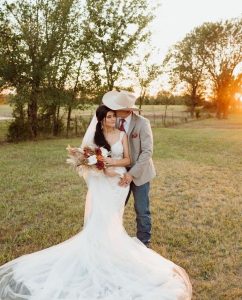




LCD:
A fully Articulated 3.20-inch LCD screen with a 2,100k-dot resolution is featured on the Canon R5.
Comparatively speaking, articulating screens are more video-oriented than tilting or fixed ones.
Users who are interested in photography, however, typically favor tilting screens.
The Canon R5’s 3.20″ screen is larger than the industry standard, and its resolution aligns with class norms.
Since the LCD is a touch screen, you may adjust the settings and choose the focus point with your fingers.
With its Selfie-friendly screen, the Canon R5 will simplify life for those who enjoy taking individual or group selfies.
Vloggers and other video artists working in a single-person setting will also benefit from the LCD screen on the R5.
The Canon EOS R5 has a flexible LCD screen attached to the body.
The LCD has a side hinge that allows it to be flipped out at unusual angles in portrait and landscape usage.
Film filmmakers also frequently praise the flexibility of this fully articulated, swivel LCD attachment style.
The design is also well-liked among vloggers because they can turn the screen to face themselves.
The R5’s top-level LCD is one of its valuable features.
Although smaller than the back screen, the control panel transmits crucial shooting information and might be helpful for quick and easy settings verification.
Viewfinder:
The R5 has an integrated electronic viewfinder, making it more straightforward to take pictures in bright sunshine and other circumstances where it can be challenging to see the LCD panel.
5,760k dots of resolution and 100% coverage make up the viewfinder.
An electronic viewfinder (EVF) is a camera viewfinder where the image taken by the lens is shown on a small screen (often LCD or OLED) that the photographer may use to compose their shot.
Electronic viewfinders also accurately depict your scene as it will appear when captured on Camera, as opposed to the world as it appears through the lens.
So, you can immediately see if your photo is exposed correctly in real time; electronic viewfinders are a great tool.
The viewfinder’s eye point is 23 millimeters away.
To accurately frame your photographs and reduce the need for post-shot cropping, 100% coverage ensures that what you see in the viewfinder when taking the photo corresponds perfectly to what you will see later in your image.
The viewfinder has a 0.76x magnification ratio (35mm equivalent).
Connectivity Comparison:
The degree to which a camera can interact with its surroundings can play a significant role in selecting a camera for various imaging applications.
2.4/5Ghz Built-in Wi-Fi®^ Capability:
A first for EOS mirrorless cameras, the EOS R5 camera now offers a 5 GHz Wi-Fi® connection in addition to the more typical 2.4 GHz Wi-Fi®.
Users can easily and quickly transfer high-speed FTP data between cameras and the free Canon Camera Connect app.
To browse or download photos to your smart device, connect to the Camera Connect app.
You can then share and upload images directly from the device to various social networking websites and web services.
The built-in Wi-Fi® is the perfect feature for speedy wireless networking required by professional photographers utilizing the EOS R5 camera.
Bluetooth Capability:
The EOS R5 camera may instantly connect to a smartphone with the Canon Camera Connect app, thanks to Bluetooth® connectivity, which offers a constant connection.
It enables various tasks, including simple image transfer, remote shooting, GPS*3 information on your images and videos, and more.
Image. Canon Service:
Whether you are a skilled, a buff, or a casual user, the Image company created the Canon cloud service to make your imaging workflow easier.
Photographers can easily upload all images and videos in original quality and format using the EOS R5 camera and the “image. canon” service, access them through the specific app, and transmit them instantly to a computer or mobile device and third-party services.
Battery:
According to CIPA standards, the Canon R5’s LP-E6NH battery offers a battery life of 320 shots.
Since mirrorless-type cameras typically have a battery life of 377 photos, the Canon R5 has a short battery life for its class. Hence, we strongly advise R5 users to get some extra batteries.
Optional Battery Grip:
With all buttons similarly arranged in a cozy and specialized grip, the optional Battery Grip BG-R10 for the EOS R5 camera contains 2 Battery Packs LP-E6NH.
It allows for nearly seamless vertical and horizontal operation.
The Battery Grip BG-R10 also features a helpful battery charging feature (with an optional USB power delivery adapter attached) that is especially useful for power-hungry applications like video recording or shooting for an extended period.
Battery Pack LP-E6NH with a High Capacity:
The EOS R5 camera utilizes Battery Packs LP-E6NH, the same batteries used on the EOS R camera and other cameras, for enhanced power and the simplicity of compatibility among different cameras.
The Battery Pack LP-E6NH is a powerful, long-lasting battery that gives power shot after shot, which is particularly advantageous for photographers who frequently utilize EOS cameras.
Memory Card and Slots:
Two memory card slots are available on the Canon R5, and this device supports both types of memory cards. One UHS-II SD card slot and one CFexpress Type-B slot are available.
The EOS R5 camera can take many pictures because its two CFexpress dual card slots operate at breakneck speeds, taking daily photos or filming 8K films.
You also have access to a UHS-II SD*** card slot.
The most recent model of what was once known as CompactFlash cards is called CFexpress (CF card).
These high-speed memory cards are made to keep up with the demands of the newest cameras for high-resolution photographs and video. NVMe 1.3 protocols and the PCIe 3.0 interface are both used by CFexpress cards.
On the other hand, UHS-II cards offer quicker read and write rates and are made for videographers who need to record and back up significant amounts of data.
Though they offer slower speeds, UHS-I cards are far more affordable.
These are primarily made for photographers of static images.
Lenses:
There are now 32 native lenses compatible with the Canon RF lens mount on the Canon R5.
With a 54mm diameter and a 20mm flange-back distance, Canon’s new RF mount enables lens designers to create quicker and more compact products than their EF mount counterparts.
With the help of an optional EF-EOS R Mount Adapter, the RF mount may be used with pre-existing EF and EF-S-mount lenses. It offers a 12-pin electrical contact system for enhanced autofocus and image stabilization.
R5 features a sensor-based 5-axis image stabilization mechanism; thus, when these lenses are used with R5, they stabilize the R5.
The picture stabilization of the R5 is allegedly effective for up to 8.0 stops, according to Canon.
Below, I have enlisted one of the top lenses that I have used for my Canon EOS R:
- Canon RF 100-500mm F4.5-7.1L IS USM
- Canon RF 24-70mm F2.8L IS USM
- Canon RF 24-105mm F4L IS USM
- Canon RF 1200mm F8L IS USM
- Canon RF 15-35mm F2.8L IS USM
- Canon RF 800mm F5.6L IS USM
- Canon RF 50mm F1.2L USM
Video Feature:
With the Canon R5, you may store your videos in MPEG-4, H.264, and H.265 codecs and record the highest resolution of 8192 x 4320 at 30p, 24p, or 23.98p fps.
It indicates that the Canon R5 offers an outstanding 8K video, the most significant resolution currently on the market.
This new technology hasn’t gone widespread yet, like 4K, but it still allows the user enough flexibility for cropping or sampling down to 4K or lower.
Since there is no crop factor with the Canon R5, you can use your lens’s actual focal length when recording video at the highest resolution of 8K.
Photography Feature:
I also have used this Canon EOS R for different genres of photography to check its expertise in those here, and here is the outcome.
Sports Photography:
A GOOD choice for this genre of photography, the Canon R5 has a score of 77 for Sports Photography.
The photographic documentation of sporting events, competitions, workouts, and other activities is known as sports photography. The term “sports photography” refers to a variety of pursuits.
Photojournalism and common (everyday life) photography are related to it.
It captures a fleeting moment as well as the ferocity of athletic competition.
The ability to capture and depict such brief events as accurately as possible depends on the photographers’ talent, creativity, and technology improvements.
Furthermore, this kind of photography has captured our current passion.
Street Photography:
The Canon R5 is an EXCELLENT choice for this genre of photography, with a score of 98 for Street Photography.
Street photography is a kind of photography that captures ordinary life in public spaces.
The environment is so open that the photographer can frequently capture unguarded candid photos of strangers.
Street photography encourages you to be more conscious of your surroundings.
It nudges you into becoming aware of your surroundings. Among other things, shooting can make you a better person.
Why should one buy Canon EOS R5?
- More specifics offer 58 percent higher linear resolution and 44.8 more megapixels.
- Improved image quality significantly better overall rating from DXO (32 points).
- Richer colors: Produces substantially better-looking photos (3.4 bits more color depth).
- More fantastic dynamic range: able to capture a wider variety of light and dark features (3.2 EV of extra DR).
- Improved low-light sensitivity: Needs less light to produce usable photos (2.1 stops ISO advantage).
- Higher definition movie capture (8K/30p) is available for better footage.
- Improved live-view autofocus: On-sensor phase-detection technology for more reliable autofocus.
- A connection to an external microphone allows for better sound when recording audio.
- It has a headphone jack that permits audio monitoring while recording for better sound control.
- A digital camera’s data viewfinder provides additional framing information.
- A larger field of vision is present in the viewfinder of an entire glance (100 percent ).
- Features a bigger picture and a viewfinder with higher magnification (0.76x).
- The LCD on top, which controls the shooting settings, makes it easier to verify settings.
- A larger back LCD (3.2″) is provided for image inspection and configuration management.
- More thorough LCD: has a back screen with a more excellent resolution (2100k dots).
- Fewer buttons to press: It has a touch-sensitive rear screen to make handling easier.
Price:
Priced at $3,899, the Canon R5 first went on sale in the US.
Retail prices typically remain initially close to the debut price, but after a few months, discounts become accessible.
Further discounts and stock clearing sales frequently significantly lower the camera price later in the product cycle, particularly when the successor model is set to launch.
After the new model is released, handsome discounts are typically available on the used car market.
Conclusion:
After exploring the features of this Camera and using this versatile gadget for almost two years, I conclude that it is probably the best choice for outdoor photography.
No matter what kind of photography you do—portraits, events, weddings, sports, family gatherings, and more—the Canon EOS R5 is a great choice.
Although Canon’s claims about the Camera’s actual video prowess left me feeling a slight letdown for most users, it is still an excellent option for taking high-quality video clips of practically everything you direct it at.
The EOS R5 is a terrific option for almost anyone searching for a high-quality, full-frame, high-resolution mirrorless camera for outdoor photography.
Still, power users who constantly need the best video quality won’t be a good fit.
Related posts:
Best Canon Cameras for Photography:
I am a Professional and Certified Digital Photographer born in the USA. I have been in this field of photography for 22 years, and in these years, I have used many photography lenses and Cameras, which I want to share here on this website about my experience. The idea for Bestoflens.com is to provide honest information about different Lenses and Camera products in the format of a “Best lenses for AYZ” list. I want this website to be the last destination for people to pick the best Cameras and lenses to fit their needs. You can find our unbiased reviews here on Bestoflens.

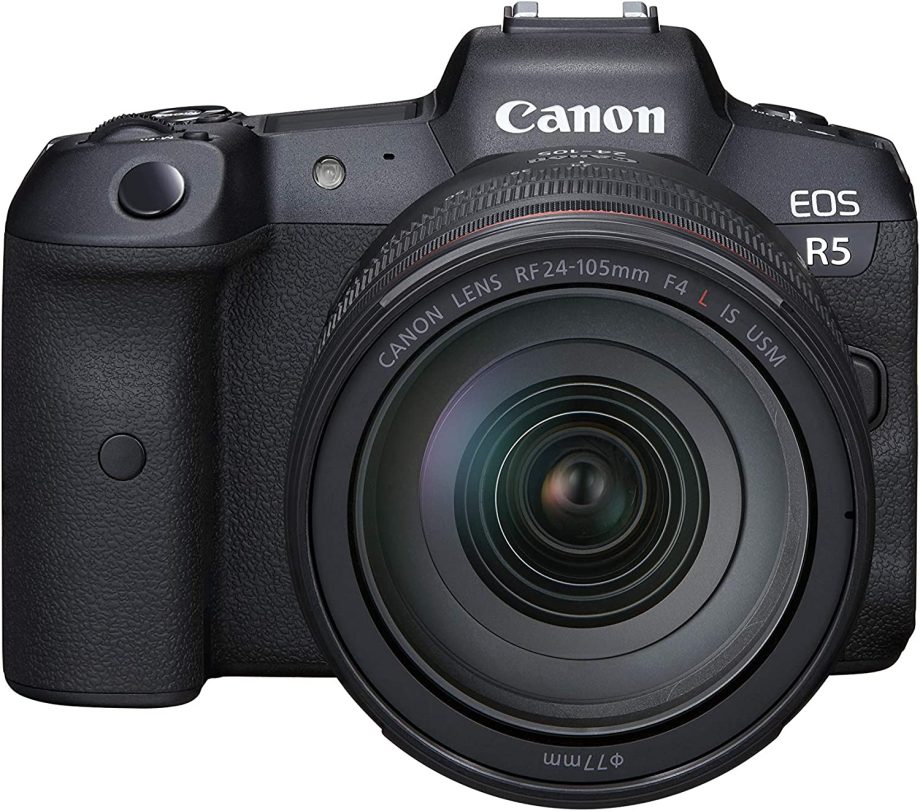
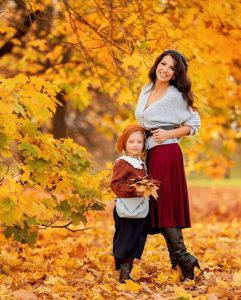
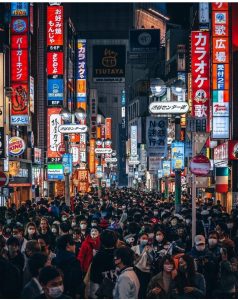
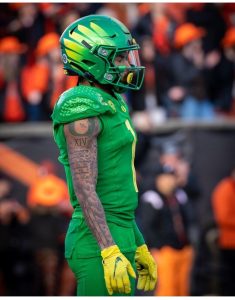


I am not sure where you’re getting your information, but great topic. I needs to spend some time learning more or understanding more.
Thanks for fantastic info I was looking for this info for my mission.